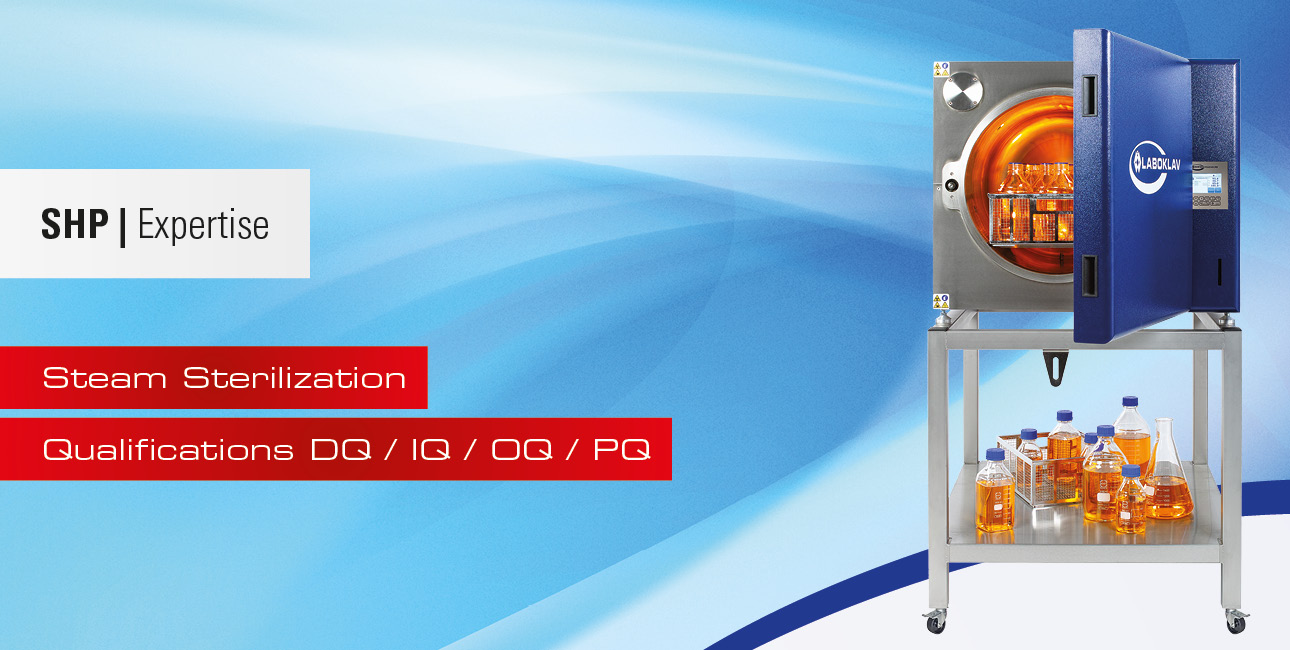Various testing and validation steps must be successfully completed to ensure that a steam sterilizer operates safely and in accordance with standards. These steps are specified in the DIN 58950 standard and serve to ensure quality assurance and compliance with legal requirements.
Acceptance tests according to DIN 58950-6:
Before a steam sterilizer is used for the first time, acceptance tests must be carried out successfully. These tests are documented in an official test report and are a prerequisite for operating the device.
An essential component is the calibration of the measuring instruments – both before and after the tests. This is the only way to ensure the accuracy and reliability of the measured values.
Design qualification (DQ):
Design qualification takes place during the planning and development phase. The aim is to prove that the device has been designed in accordance with the specified technical specifications and meets the basic requirements. The DQ refers directly to compliance with the manufacturer's internal quality management system and forms the basis for all subsequent qualification steps.
Installation qualification (IQ):
The IQ consists of a total of four partial tests. It begins at the manufacturer and is continued after installation at the operator's site. The aim is to verify the correct installation of the device in the intended environment.
The IQ includes:
- Checking the delivered components for completeness
- Identifying and documenting the manufacturing quality
- Checking the on-site requirements (e.g., power connection, media, ventilation, ambient temperature)
- Basic function tests of individual assemblies, such as vacuum test or pressure build-up
Safety-related aspects are also checked, e.g., the presence and function of emergency stop switches and protective systems.
Functional and performance qualification (OQ):
The OQ tests the functionality of the steam sterilizer – independently and depending on programs. This includes, among other things, the temperature distribution in the chamber and the functioning of the loading cycles.
The OQ is usually repeated three times to ensure reproducibility. Tests are carried out both in idle mode and with test substances such as water or standardized sterilization goods.
Control validation (CV):
Computer validation is a central component of the system life cycle. The aim is to ensure that the control software used delivers exactly the defined results.
It includes:
- Verification of program functions
- Documentation of processes
- Ensuring access controls (only authorized changes)
- Traceability of all interventions and parameter changes
The CV is documented in close cooperation between the manufacturer and the operator.
Process validation (PV):
Process validation is product-related and checks whether the selected sterilization program leads to reliable results under real conditions – with typical loads.
It is usually carried out by the operator and is particularly mandatory in pharmaceutical and medical technology. A prerequisite is that the results of the standard tests cannot be directly transferred to the product.
Validation in accordance with GMP guidelines (DIN 58950-1):
In pharmaceutical production, validation in accordance with the principles of Good Manufacturing Practice (GMP) is mandatory. It ensures that all processes, materials, equipment, and systems actually lead to reproducible, safe results.
GMP-compliant validation includes DQ, IQ, OQ, and PV and documents all relevant steps in a complete verification concept.
Validated disinfection procedures (DIN 58949 / EN 554):
Validated procedures must also be used for thermal or chemical disinfection. These are based on the DIN 58949 standards and the European EN 554 standard.
Only validated procedures guarantee safe disinfection and are legally permissible.
Conclusion:
The successful completion of all qualification and validation steps is a prerequisite for the legally compliant operation of a steam sterilizer. In addition to compliance with legal requirements, they also enable sustainable quality assurance in daily use—in laboratories, clinics, or production.
The documentation of these processes forms an indispensable basis for audits, certifications, and the internal traceability of critical processes.

